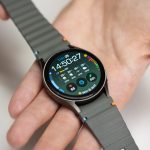- If you have high blood pressure, a home blood pressure monitor can track trends in your hypertension.
- Studies show taking a daily blood pressure reading helps you to control your hypertension over time.
- Our top pick, Omron Platinum Blood Pressure Monitor, can save 100 accurate readings for two people to be shared with your doc.
- This article was medically reviewed by Dr. Velimir Petkov, DPM, a podiatrist and board-certified wound specialist physician, practicing at Premier Podiatry.
High blood pressure is very common, but it is also very serious – it’s known as the “silent killer” because it can be dangerous, even deadly if left untreated. If you go to the doctor and they reveal you have high blood pressure (hypertension), taking regular readings on your own at home gives you a better picture of whether your health is improving or getting worse – and, especially, if you’re nearing dangerous levels that may cause a heart attack.
What’s more with fewer in-person doctor visits these days and more autonomy over owning your health, an at-home blood pressure monitor is a smart device to invest in if you have high blood pressure. By recording your blood pressure levels several times a day for several months, you can provide our doctors with a larger set of data for examining chronic health issues or determining our current level of physical fitness. In fact, studies show being aware of your blood pressure on a daily basis can help you learn to control it and even lower it over time.
At-home blood pressure monitor devices are affordable, easy to use, and incredibly helpful for people with hypertension.
At the end of this guide, we’ve included insight into whether wrist- or arm-based blood pressure monitors are better, as well as the overall accuracy of at-home monitors. Here, the five most accurate, affordable, and generally helpful blood pressure monitors available for home use.
Here are the best blood pressure monitors:
- Best blood pressure monitor overall: Omron Platinum Blood Pressure Monitor
- Best digital arm monitor: Beurer BM47 Upper Arm Blood Pressure Monitor
- Best bare-bones monitor: Paramed Professional Manual Blood Pressure Cuff
- Best wrist monitor: Paramed Automatic Wrist Blood Pressure Monitor
- Best budget monitor: Hyology Arm Blood Pressure Monitor
Amazon
The Omron Platinum has an easy-to-read digital screen, support for multiple users, and the ability to track how your blood pressure changes over time.
Pros: Fast and easy to use, wireless cuff, rechargeable battery, multi-user support, saved historical data, irregular heartbeat alerts
Cons: Smartphone app not user friendly
Thanks to its ease-of-use and numerous features, the Omron Platinum tops our list as the best at-home blood pressure monitor on the market. The device has a cuff that is designed to fit most people and it can wirelessly share its readings with the base unit. It doesn’t have any cables or pumps that can get tangled or in the way while measuring your blood pressure. You can easily strap the monitor onto a person while they are in a chair or even in bed for quick and easy checks.
The Omron Platinum has the ability to support two users and keep track of the results for each person individually, which is great for a household focused on getting healthier. The device can save 100 blood pressure readings per user in its memory and that information can easily be shared with doctors.
Thanks to the Platinum’s built-in Bluetooth, the base unit can be paired with a smartphone as well. You can add even more users and results and save them in Omron’s free app for iOS and Android. The app isn’t as user-friendly as it could be, but it is usable once you get the hang of it.
One of the more unique features of this particular monitor is its ability to compare current blood pressure results with those stored in the memory and issue an alert if something is amiss. The device can tell if the systolic or diastolic measurements are abnormal, which is especially helpful in the morning when there is a higher risk for heart attack or stroke. By raising the users’ awareness of their condition, it gives them time to see medical assistance for what could be a potentially life-threatening problem.
Well-built and easy-to-use, the Omron Platinum‘s dual backlit screens are bright and easy to read from any angle. This dual-screen approach allows the device to display the user’s current blood pressure readings on one side, and show historical data on the second screen. This can be extremely helpful for giving patients a better understanding of how their blood pressure varies from day to day and how stress, anxiety, and other factors can influence it.
Best digital arm monitor
Amazon
The Beurer BM47 is easy to use thanks to its digital screen, adjustable cuff, and ability to track four patients’ blood pressure over time.
Pros: Accurate, simple, multi-user support for up to four people, large LED screen
Cons: Only saves historical data for seven days
Inexpensive, easy to use, and feature-packed, the Beurer BM47 upper arm blood pressure monitor will suit the needs of most people. The compact device includes a soft, adjustable cuff designed to fit small and large arms. The monitor supports up to four users.
One of the BM47‘s best features is its simplicity. Once the cuff is securely in place, all you need to do is tap a single button to activate the device. Within a matter of seconds, the cuff will constrict and measure systolic and diastolic blood pressure. The readings are then displayed on the large LED screen along with the patient’s heart rate. A series of colored lights along the edge of the unit serves as an indicator of a patient’s current danger level, making it easy to tell at a glance if their blood pressure is too high.
The BM47 is lauded for its accuracy and it has the ability to save up to 30 blood pressure measurements for four unique users in its onboard memory. When checking an individual’s current blood pressure, the device can then compare the results to the readings that have been taken over the previous seven days. This can be useful for tracking short-term variances, but if you want to compare data for a period longer than a week, you’ll need to save the data manually.
Because the BM47 tracks a user’s pulse, it also has the ability to identify unusual heart rhythms. This is yet another safety feature that could give users a warning if the device detects arrhythmia.
Best bare-bones monitor
Amazon
The Paramed Professional Manual Blood Pressure Cuff is a traditional monitor that uses a cuff and a small air pump to measure blood pressure on an analog gauge.
Pros: Traditional analog design may appeal to some, easy to use, affordable price, accurate readings, comes with a case
Cons: Analog dial not as easy to read as a digital screen, no alerts or digital monitoring system
Some would describe the Paramed Professional Manual Blood Pressure Cuff as an old-school method for monitoring your blood pressure, but we prefer to think of it as a tried-and-true approach instead. This monitor resembles the ones that were used by doctors for decades before high-tech, digital devices came along. The traditional method continues to work well, particularly for those who just want as simple a monitor as possible.
Technically defined as a sphygmomanometer, this monitor features a traditional cuff that wraps around the upper arm. The user then squeezes a small air pump that causes the cuff to inflate and constrict. As the pressure is released through an air valve it will equalize at approximately the same level of the current systolic pressure in the body. It then provides the blood pressure reading, which is indicated by a needle pointing to a number on an analog gauge rather than a digital screen.
This model is a no-frills, simple, and very accurate way to monitor your blood pressure. That said, all of its components are very durable and made of high-quality materials which makes it feel like a premium product, even though it has an affordable price tag. The sphygmomanometer even comes with a handy case for storage and transport, making it easy to take with you when traveling.
Obviously, this low-tech monitor lacks a lot of features that you’ll find in other models. It doesn’t keep track of your blood pressure results for instance, nor is it capable of providing any kind of alerts if a patient’s blood pressure is too low or too high. Instead, it is a simple, proven method for keeping track of this important indicator of your health, and for many people, that’s all it needs to be.
Best wrist monitor
Amazon
If you’re looking for a wrist blood pressure monitor, the Paramed Automatic is a good choice because it is easy to operate and more accurate than most wrist-based monitors.
Pros: Small, lightweight, easy to carry, accurate for a wrist monitor, large LCD screen, can store up to 90 results
Cons: Screen can be hard to read in some lighting conditions, only single-user support
Compact and lightweight, the Paramed Automatic Wrist Blood Pressure Monitor is a good alternative to the more traditional upper arm cuff models. This FDA-approved device wraps around the user’s wrist and is activated with the touch of a single button. You can see results for the systolic and diastolic numbers and the patient’s current heart rate within 30 seconds.
The main appeal of this monitor is how small and simple it is: Its onboard memory can store the results of 90 blood pressure readings, which can help you better understand trends in your levels. It can only hold one person’s profile, but it’s compact enough to be carried with you anywhere, making it a great choice for folks always on the go who have trouble with bulkier arm models.
With its surprisingly large display, this wrist-worn blood pressure monitor presents information in a clear, easy-to-understand fashion. The monochrome screen works well in most circumstances but can get a little washed out in direct sunlight. It can be hard to read while outdoors, but it functions just fine under most other circumstances.
As already mentioned, wrist blood pressure monitors can be a bit more finicky and lack the level of accuracy found in the bulkier upper-arm models. That said, this particular unit is quite accurate and dependable, making it easy to recommend.
Best budget monitor
Amazon
Hyology’s digital arm monitor is an affordable option that is still accurate and feature-packed.
Pros: Inexpensive, easy to use, supports two users, stores 90 readings per user, can be powered by batteries or wall outlet
Cons: Slower than some other models
There are a number of inexpensive blood pressure monitors to choose from, many of which will perform adequately when it comes to monitoring your health. But few models offer the same level of value that you’ll find in the Hyology Arm Blood Pressure Monitor, a device that packs in a lot of features for an easy-to-swallow price.
It has a large, bright LCD screen that displays both systolic or diastolic readings, along with heart rate. It offers a simple one-button operation, supports two users, and can store 90 readings for each individual. It can even detect an irregular heartbeat and alert the user if something seems amiss.
Unlike the other models we recommend, this device can operate with either standard AAA batteries or charge up with a USB-C cable and power adapter.
This model isn’t the fastest blood pressure monitor around, and it takes about one minute for it to collect data for its readings, but it’s a good deal at this price. Hyology created an affordable monitor that gives anyone the ability to add an accurate and handy blood pressure monitor to their home.
Wrist vs. arm blood pressure monitors
When shopping for a blood pressure monitor of your own, you’re likely to come across two distinct types: those that wrap around the upper arm and those that go around the wrist. Generally speaking, the monitors that take their readings from the upper arm tend to be more accurate and consistent. That’s not to say that wrist monitors can’t be reliable too; they are just a bit more finicky to use.
Arm monitors fall into two distinct categories: aneroid or digital. An aneroid model features a more traditional design with a cuff that wraps around the upper arm and is inflated by squeezing on a bulb. The blood pressure is then read from a mechanical gauge. These types of monitors are slower and can be less accurate, but they are also more affordable.
Alternatively, a digital monitor inflates the cuff either with a bulb or automatically from the device depending on the individual model. The results are displayed on an easy-to-read screen. Digital monitors are simple and straightforward to use. That simplicity comes at a price, though, as digital models are usually more expensive than their aneroid counterparts.
Are at-home blood pressure monitors accurate?
Good-quality at-home blood pressure monitors are accurate, but it’s important to do the research to find the best option for your needs. No matter which type of blood pressure device you choose, it is a good idea to check its accuracy before relying on it too closely.
You can check its accuracy by bringing the monitor along with you on a visit to your doctor’s office and comparing the numbers between your monitor and the one that is used by the healthcare professionals. Slight variances in accuracy are normal, but if the numbers vary dramatically, you should return the one you purchased for a different model.
When deciding which specific blood pressure monitor is right for you, you’ll want to be sure that the cuff fits properly before purchasing. Most devices have a fairly universal fit, but some arm cuffs can be too large or too small. If the cuff is too loose or too tight, the blood pressure readings may not be accurate, invalidating any tests. It helps to try a few of the monitors out ahead of time to ensure that they’ll work for you and to get a sense of the other features they offer as well.
Powered by WPeMatico






